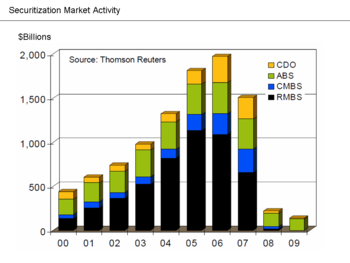Contents:




The two main ways that owners might get money are through equity capital and retained profits. They are categorised according to their generation source, control and ownership as well as time period. With this in mind, you should study the benefits and drawbacks of each financing option and select the ideal one that will help you meet your business goals. With the right sources of money, the sky’s the limit for your business. Choosing an inappropriate type of funding can lead to unfavorable outcomes such as feuds between the lender and business owner, shift of control, waste of resources and other negative consequences.
- It can help boost corporate credit scores, which is especially beneficial for new companies.
- A company’s financial strength and position are key elements to be taken into account while deciding the source of funds.
- ETFs also typically carry lower fees than the equivalent mutual fund.
- Owner’s funds mean funds which are procured by the owners of a business, which may be a solo entrepreneur or partners or shareholders of a business.
- Entrepreneurs should therefore seek out a variety of other sources that can meet their funding needs.
While some company owners may choose to retain full ownership of their company, others could favour risk sharing. They can provide funding in the form of debt , equity , or even a hybrid (e.g., a royalty whereby they get paid back via a percentage of your sales). You must prove to the lender that the likelihood of you paying back the bank loans is high, and meet any requirements they have (e.g., having collateral in some cases). However, once again, you will have to pay interest along with the principal.
This strategy requires less research from analysts and advisors, so there are fewer expenses passed on to shareholders and these funds are often designed with cost-sensitive investors in mind. Conversely, growth funds, look to companies that have had strong growth in earnings, sales, and cash flows. These companies typically have high P/E ratios and do not pay dividends. A compromise between strict value and growth investment is a “blend,” which simply refers to companies that are neither value nor growth stocks and are classified as being somewhere in the middle. Funds can be classified based on both the size of the companies, their market caps, and the growth prospects of the invested stocks. The term value fund refers to a style of investing that looks for high-quality, low-growth companies that are out of favor with the market.
Other Helpful Funding & Business Plan Articles
ETFs also typically carry lower fees than the equivalent mutual fund. Many ETFs also benefit from active options markets, where investors can hedge or leverage their positions. Index Fundsinvest in stocks that correspond with a major market index such as the S&P 500 or the Dow Jones Industrial Average .
Canuck Place mother and child team up to tackle BMO Vancouver Marathon to raise funds – Global News
Canuck Place mother and child team up to tackle BMO Vancouver Marathon to raise funds.
Posted: Sun, 07 May 2023 23:01:56 GMT [source]
Short-term borrowings offer the benefit of reduced cost due to the reduction of idle capital, but long-term borrowings are considered a necessity on many grounds. Equally, equity capital has a role to play in the scheme for raising funds in the corporate sector. Many development banks and international agencies have come forth over the years for the purpose of international financing.
What is Source of Funds?
Therefore, it is said that finance is the lifeblood of any business. The initial capital brought in by the entrepreneur is not always enough to cover all the company’s financial needs. Entrepreneurs should therefore seek out a variety of other sources that can meet their funding needs. Funds can be raised from personal sources or by borrowing from banks, friends, etc. A hedge fund is an investment type that is distinct from mutual funds or ETFs.
How Scalia Law School Became a Key Friend of the Court – The New York Times
How Scalia Law School Became a Key Friend of the Court.
Posted: Sun, 30 Apr 2023 07:00:00 GMT [source]
Companies that fail to implement SoF as part of their AML procedures, on the other hand, subject themselves to fraud, reputational harm, and significant fines. SoF must be confirmed in particular when a customer’s finances are in issue or when there is a heightened risk of AML. The quality of the goods and services offered by the business is greatly affected by the financial situation of the business. Capital projects fund resources are used to finance the capital projects of a country, such as purchasing, building, or renovating equipment, structures, and other capital assets. Emergency funds are personal savings vehicles created by individuals used to cover periods of financial hardship, such as job loss, prolonged illness, or a major expense. The rule of thumb is to create an emergency fund that contains at least three months’ worth of net income.
Seasonal enterprises sometimes focus on short-term finance for the interim phase across seasons since they must accumulate inventories in order to meet future sales objectives. Wholesalers and producers that have a large number of their resources in inventories and receivables also need a lot of money quickly. However, the different categories that qualify for the required 80% of the assets may be vague and wide-ranging.
On the basis of period:
Borrowing from banks and other financial institutions, mortgages from financial firms, the issuance of debentures, public deposits, and lines of credit are some of the ways to raise borrowed funds. Mutual funds provide investors with professional management, but fees reduce the fund’s overall payout, and they’re assessed to mutual fund investors regardless of the performance of the fund. Since fees vary widely from fund to fund, failing to pay attention to the fees can have negative long-term consequences as actively managed funds incur transaction costs that accumulate over each year. They are not considered mutual funds but employ strategies consistent with mutual funds.
On the contrary when a person thinks of winding up his business, in that case also he needs funds to settle the stakeholders of the company. Stand out and gain a competitive edge as a commercial banker, loan officer or credit analyst with advanced knowledge, real-world analysis skills, and career confidence. Crowdfunding represents a process of raising funds to fulfill a certain project or undertake a venture by obtaining small amounts of money from a large number of individuals. The drawback of borrowing money through debt is that borrowers need to make interest payments, as well as principal repayments, on time. Alternatively, the company can invest the money into a new project, say, building a new factory, or partnering with other companies to create a joint venture. The Government of Canada’s Business Benefits Finder provides sources of financing, including government grants and subsidies.
This can come in the form of a personal types of source of funds, a traditional business loan, or different loans based on the type of asset you need to purchase (e.g., for equipment, land, or vehicles). Pooled funds, such as mutual funds, aggregate capital from many investors, allowing them to benefit from economies of scale and diversification. Unit investment trusts buy a fixed portfolio of securities and allows investors to redeem their “units,” similar to a mutual fund.
- The Securities and Exchange Commission requires that funds have at least 80% of assets in the particular type of investment implied in their names.
- The two issues with this type of funding are 1) how much personal savings you have and 2) how much personal savings are you willing to risk.
- In return for investing in your business, supporters will receive equity, albeit with less liquidity than what do would get with public stocks.
- To maintain liquidity and the capacity to accommodate withdrawals, funds typically have to keep a larger portion of their portfolio as cash than a typical investor might.
- In addition to capital, this includes profits reinvested in the company.
Equity capital tends to be among the most expensive forms of capital as investors may expect a share in profit. It may be harder for smaller or troubled businesses to get debt financing when the economy is going through a slowdown. Borrowing money allows a tax deduction on any interest payments made to banks and other lenders. In case of large fund requirements, the company has to seek the help of outsiders to raise these funds. Debentures and bonds are the most common debt financing availed by the majority of the firm.
The objective of this fund, known as an asset allocation fund, is to reduce the risk of exposure across asset classes. A mutual fund is a type of investment vehicle consisting of a portfolio of stocks, bonds, or other securities. Mutual funds accept money from investors and use that money to invest in a variety of assets. Mutual funds have managers that manage the fund, which they charge a fee to investors for. Investors allocate money to mutual funds in hopes of increasing their wealth. Companies seek equity financing from investors to finance short or long-term needs by selling an ownership stake in the form of shares.
More importantly, shareholders dilute a company’s ownership control as long as it sells more shares. Equity crowdfunding, where, in exchange for their money, investors receive shares in a company or the right to a portion of revenues or profits from a specific product. The cost of commercial paper to the issuing firm is generally lower than commercial bank loans; commercial paper provides a continuous source of funds. While investment funds in various forms have been around for many years, the Massachusetts Investors Trust Fund is generally considered the first open-end mutual fund in the industry. The fund, investing in a mix of large-cap stocks, launched in 1924. In the Indian context, a GDR is an instrument issued abroad by an Indian company to raise funds in some foreign currency and is listed and traded on a foreign stock exchange.
An open-end management company is a type of investment company responsible for the management of open-end funds. For the final step, we must calculate the sponsor equity (i.e., the size of the equity check from the PE firm) now that we have the values of the total debt raised and the management rollover. The predominant source of funds will be in the form of debt capital. Other nuances such as management rollover are also going to show up in this section.
Corporations often need to raise external funding or capital in order to expand their businesses into new markets or locations. It also allows them to invest in research & development (R&D) or to fend off the competition. And, while companies do aim to use the profits from ongoing business operations to fund such projects, it is often more favorable to seek external lenders or investors to do so. However, one disadvantage of equity capital funding is sharing profits among all shareholders in the long term.


Retained earnings are the most commonly stated internal source of funds in an organisation. Some of the commonly used middle-term sources are public deposits, lease financing etc. Companies use retained earnings from business operations to expand or distribute dividends to their shareholders.
Commercial papers are only available to financially sound and highly rated companies. The first ETF, the SPDR S&P 500 ETF, debuted in the United States in 1993. By the end of 2018, ETFs had roughly $3.4 trillion in assets under management. Gordon Scott has been an active investor and technical analyst or 20+ years.
In absence of sufficient data, the rollover amount can be roughly approximated by multiplying the rollover % assumption by the total equity required. To calculate the rollover amount, the total buyout equity value and the total pro forma ownership % that will be rolled over must be determined. Management rollover is usually perceived as a positive sign because it shows that management believes in the company’s ability to implement its growth strategy and its future trajectory.


Full BioMichael Boyle is an experienced financial professional with more than 10 years working with financial planning, derivatives, equities, fixed income, project management, and analytics. In order to scrutinize source of funds and source of wealth it is important to understand the distinction between the terms. Capital stock is the number of common and preferred shares that a company is authorized to issue, and is recorded in shareholders’ equity. Capital structure is the particular combination of debt and equity used by a company to funds its ongoing operations and continue to grow.
Funds often give investors a choice either to receive a check for distributions or to reinvest the earnings to purchase additional shares of the mutual fund. These sources provide funds for a specific period, on certain terms and conditions, and have to repay the loan after the expiry of that period with interest. Often it does put a lot of burden on the business as payment of interest is to be made even when the earnings are low or when the loss is incurred. These institutions don’t take into consideration the activities of business after the loan is given. Generally, borrowed funds are provided for the security of some assets of the borrower. Any person who commits capital with the expectation of financial returns is an investor.
